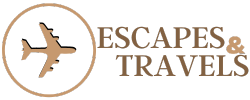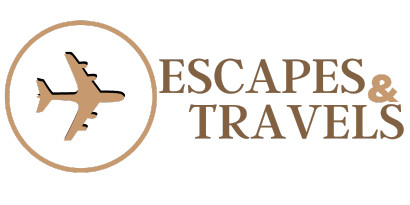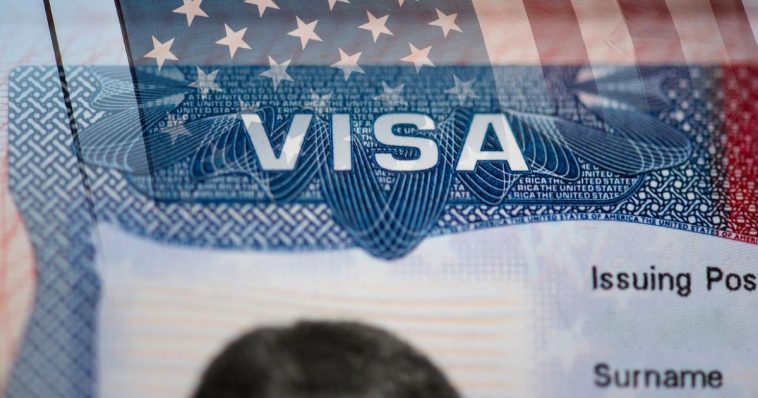For travelers, applying for a U.S. visa can feel like a challenging journey, but proper preparation makes it significantly more manageable. Whether planning a trip for tourism, work, study, or family visits, knowing which visa category fits your purpose is a crucial first step. This guide is crafted to help travelers navigate the visa application process, covering everything from selecting the appropriate visa to avoiding common pitfalls. With updated policies and processing times in 2025, staying informed is key to ensuring a smooth and successful application.
Plan Ahead: Get Your U.S. Visa for Smooth 2025 Trips
1. Understanding U.S. Visa Categories
The United States offers various visa categories, primarily divided into:
- Nonimmigrant Visas: For temporary stays, such as tourism (B-2 visa), business (B-1 visa), study (F-1 visa), or specialized work (H-1B visa).
- Immigrant Visas: For permanent residency, often based on family relationships, employment, or other categories.
2. Determining the Appropriate Visa Type
Choose the correct visa for your trip:
- Tourism or Business: B-1/B-2 visas are common for short-term visits.
- Study: F-1 or M-1 visas, depending on your course of study.
- Work: H-1B visas for specialty occupations.
For a complete list of visa types, visit the U.S. Department of State’s website.
3. Checking Visa Waiver Program (VWP) Eligibility
Citizens of certain countries may travel to the U.S. for tourism or business for up to 90 days without a visa under the VWP. However, they must obtain an Electronic System for Travel Authorization (ESTA) before travel. Ensure your country participates in the VWP and that you meet all eligibility criteria.
4. Completing the DS-160 Form
All nonimmigrant visa applicants must complete the DS-160 form online:
- Access the Form: Visit the Consular Electronic Application Center to start your application.
- Information Required: Personal details, travel plans, U.S. contact information, and previous U.S. travel history.
- Accuracy: Verify information against supporting documents.
5. Paying the Visa Application Fee
After completing the DS-160, pay the non-refundable visa application fee:
- Fee Amount: Varies depending on the visa type.
- Payment Methods: Consult your country’s U.S. Embassy or Consulate website for accepted payment methods.
6. Scheduling the Visa Interview
Once the fee is paid:
- Appointment: Schedule your interview at your country’s U.S. Embassy or Consulate.
- Wait Times: Check current wait times for interview appointments.
7. Preparing Supporting Documents
Gather the necessary documents for your interview:
- Passport: Passport must be valid for at least six months after your intended stay.
- Photo: Recent passport-sized photograph meeting U.S. visa standards.
- Financial Evidence: Proof of sufficient funds for your stay.
- Ties to Home Country: Documents demonstrating your intention to return home, such as employment contracts or property ownership.
8. Attending the Visa Interview
On the day of your interview:
- Punctuality: Arrive early for security processing.
- Presentation: Dress appropriately and be prepared to answer questions about your travel plans and ties to your home country.
9. Post-Interview Process
After the interview:
- Approval: If approved, your passport will be kept for visa stamping and returned as per the consulate’s procedures.
- Denial: If denied, you will be informed of the reason and whether you can reapply.
10. Special Considerations for 2025
Be aware of recent changes affecting visa applicants:
- Transgender and Nonbinary Travelers: Several European countries have issued updated travel warnings for their transgender and nonbinary citizens planning to visit the United States. This follows an executive order by the Trump administration on January 20, which mandates that the U.S. federal government issue IDs reflecting only ‘male’ or ‘female.’ Travelers with ‘X’ gender designation passports or those who have changed genders are advised to contact U.S. embassies for guidance before traveling.
- Increased Scrutiny: Recent incidents have seen European nationals detained, often due to misinterpretations of visa requirements, with border officials conducting searches of phones and electronic devices. Travelers are advised to ensure full compliance with entry criteria.
11. Utilizing the U.S. Visa Wizard
The U.S. Embassy in the Philippines has introduced a new U.S. Visa Wizard to assist applicants in determining the appropriate visa category and application process. This tool can be particularly helpful for first-time applicants.
12. Staying Informed
Visa policies can change. Regularly check the U.S. Department of State’s website and your country’s U.S. Embassy or Consulate for the latest information.
13. Seeking Professional Assistance
If you find the visa application process challenging, consult an immigration attorney or a reputable visa processing agency. They can provide personalized guidance and help navigate complex situations.
14. Understanding the Visa Bulletin
The U.S. Department of State publishes a monthly Visa Bulletin that summarizes the availability of immigrant numbers. This is particularly relevant for those applying for immigrant visas, as it indicates when applicants should be notified to assemble and submit required documentation to the National Visa Center.
15. Preparing for Your U.S. Arrival
Once your visa is approved, preparing for your arrival in the United States is crucial. Follow these steps to ensure a smooth entry process:
- Review Your Visa Details: Double-check that your visa details match your passport and travel plans. Any errors should be corrected before departure.
- Prepare for Customs and Border Protection (CBP) Inspection: Upon arrival, you will be inspected by CBP officers. Be ready to present your passport, visa, and any supporting documents. Answer all questions honestly and clearly.
- Understand Your Visa Conditions: Some visas have restrictions, such as work limitations or a required departure date. Ensure you comply with all conditions to avoid future travel complications.
- Have Contact Information Ready: Keep the address of your U.S. accommodation and contact details of any hosts or sponsors easily accessible.
16. Extending or Changing Visa Status
If you need to extend your stay or change your visa type while in the U.S., you must apply to U.S. USCIS before your visa’s expiration.
- Visa Extension: If eligible, you may apply for an extension by filing Form I-539. This is common for B-1/B-2 visa holders who require additional time for tourism or business.
- Change of Status: If you wish to switch from a tourist visa to a student visa (F-1) or another category, you must apply before your authorized stay expires. Changing status does not guarantee approval, and you may be required to leave the U.S. and reapply from abroad.
17. Avoiding Visa Violations
Violating U.S. visa rules can have serious consequences, including deportation and future travel bans. To maintain compliance:
- Do Not Overstay: Always leave the U.S. before your visa expires or apply for an extension if necessary.
- Do Not Work Illegally: Certain visa types prohibit employment. If you plan to work, ensure your visa allows it.
- Follow Travel Restrictions: Some visas limit travel to and from the U.S. Check your specific visa conditions.
18. Reapplying After a Visa Denial
If your visa application is denied, don’t lose hope. You can reapply, but you must address the reasons for the previous denial.
- Understand the Reason: The consular officer will provide a reason for the denial under a section of U.S. law (e.g., Section 214(b) for lack of strong ties to your home country).
- Improve Your Application: Strengthen your supporting documents, provide more evidence of ties to your home country, or clarify any discrepancies.
- Wait for Eligibility: Visa reapplications may be subject to waiting periods after denial. Follow the instructions given at the time of denial.
19. Frequently Asked Questions (FAQs)
- What is the processing time for a U.S. visa application in 2025? Visa processing times vary by country and type, typically ranging from a few weeks to several months. Check the U.S. Embassy website for specific timelines.
- Can I travel to the U.S. while my visa application is pending? No. You must wait for visa approval before traveling unless you have another valid visa or ESTA authorization.
- Is travel insurance required for a U.S. visa? It’s not mandatory for most visa types but is highly recommended to cover medical expenses and unexpected trip disruptions.
- What happens if I lose my passport with a U.S. visa? Immediately report the loss and apply for a new passport. Visa reapplication will likely be necessary.
20. Final Tips for a Successful U.S. Visa Application
- Be Honest and Transparent: Any false information can lead to visa denial and future ineligibility.
- Apply Early: Schedule your visa appointment well before your intended travel date.
- Stay Informed: Policies may change, so regularly check the official U.S. government websites for updates.
What to Avoid When Applying for a U.S. Travel Visa in 2025
1. Avoid Incomplete or Incorrect Documentation
Visa rejections often stem from incomplete or inaccurate documentation. Ensure you:
- Double-check all forms, especially the DS-160 form, for accuracy.
- Include financial proof, travel itineraries, and proof of ties to your home country as supporting documents.
Passport must be valid for at least six months after your departure date.
2. Don’t Provide False or Misleading Information
Honesty is non-negotiable during the visa application process. Providing false or misleading information on your application or during the interview can lead to immediate rejection and could affect future applications. Be transparent about your travel purpose, personal details, and financial status.
3. Avoid Last-Minute Applications
Applying late can lead to unnecessary stress and complications. Visa processing times can vary, especially with fluctuating demand in 2025. Start your application process months in advance to account for any delays.
4. Don’t Skip Researching the Right Visa Type
Applying for the wrong visa category is a common mistake. The B-1/B-2 visa is appropriate for general travel purposes like tourism or visiting family. Ensure the visa you’re applying for aligns with your travel purpose to avoid confusion or rejection.
5. Avoid Neglecting the Photo Requirements
The photo you upload for the DS-160 form must meet strict requirements, such as size, resolution, and background color. An incorrectly formatted photo can delay or even void your application. Review the guidelines on the U.S. Embassy website before submitting your photo.
6. Don’t Overlook Financial Proof
Consular officers want assurance that you have sufficient funds to cover your trip and won’t overstay in the U.S. Provide clear evidence of financial stability, such as bank statements, employment verification, or proof of property ownership.
7. Avoid Weak Ties to Your Home Country
Demonstrate strong ties to your home country. These ties reassure the consular officer of your intent to return after your trip. Avoid presenting documents that prove connections, such as family commitments, employment, or property ownership.
8. Don’t Be Unprepared for the Visa Interview
The visa interview is a pivotal part of the process. Common mistakes during the interview include:
- Failing to answer questions clearly and confidently.
- Being vague about the purpose of your trip or your ties to your home country.
- Lacking required documents during the interview. Prepare for common questions and present yourself professionally.
9. Avoid Applying Without a Travel Plan
While you don’t need to finalize every detail, having a clear travel plan helps demonstrate your seriousness as a traveler. Avoid applying without providing a basic itinerary, even if it’s tentative.
10. Don’t Assume Approval is Guaranteed
Even with all documents prepared, approval isn’t guaranteed. Visa officers assess each application carefully, considering factors like intent, finances, and ties to your home country. Avoid complacency and ensure every aspect of your application is thorough and accurate.
Your Journey to the U.S.
For travelers eager to explore the United States, navigating the visa application process requires thoughtful planning and meticulous attention to detail. From ensuring accurate documentation to preparing for the interview, each step plays a vital role in the success of your application. By staying updated on policy changes, avoiding common errors, and applying well in advance, you can improve your chances of approval and focus on making your travel plans a reality. With the proper preparation, the U.S. is just a step closer to becoming your next destination.





